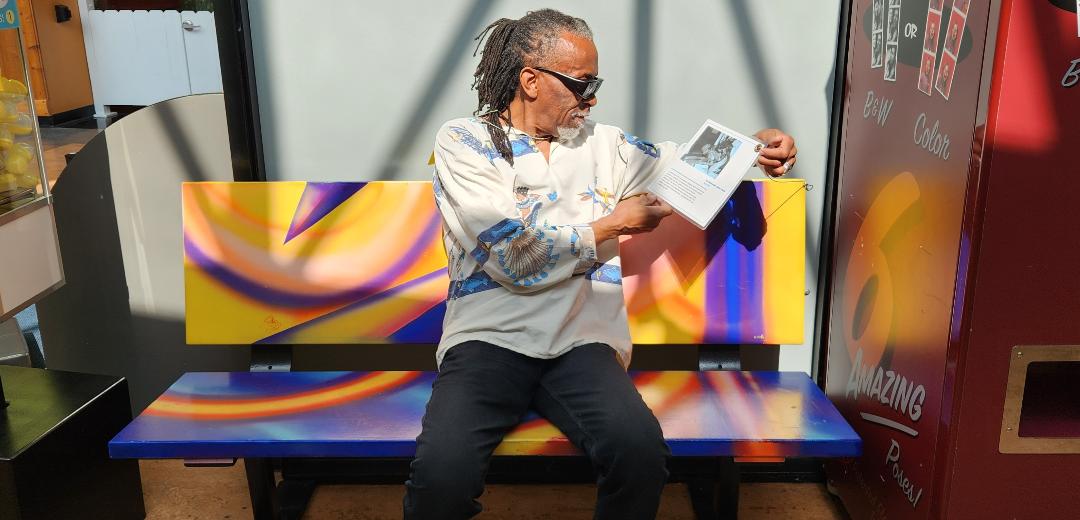1970s- Onli founded the Black Arts Guild in 1970 as a creative think-tank for young gifted dedicated visual artist to facilitate their transition from talented but frustrated Art Students into life-long professionals. Bringing the idea and esthetics of the Black Cultural Revolution to commercial applications was its covert agenda. Getting paid mattered!
With B.A.G. Onli directed and participated in various traveling themed group exhibitions starting in 1970 until 1976. B.A.G. used the watermelon as its logo and each member produced watermelon infused artwork as part of its secretive initiation process.
"OM" Created in 1971 when Alice Coltrane was Onli's spiritual advisor.
Pen & Ink on archival illustration board. Approximately 22: X 28".
B.A.G. was decommissioned in 1978 when Onli was focused on working in Paris, France.
1974- One of Onil's Rhythmistic paintings from his collection celebrating the glory & power of Black Women was accepted in the landmark juried group exhibition in Berkeley California at the Rainbow Sign Gallery.
Playboy Magazine hired Onli to illustrate for the "Reviews Section" of its trendy "OUI" Magazine. This exposed thousands of readers on an international scale to his Rhythmistic treatments and he used this to further his thesis of Rhythmism and its capacity to communicate. illustrate and be commercialized.
Onli continued to grow his watermelon themed body of Rhythmistic art. He calls this collection "Passion Fruit". It was during his tenure directing B.A.G. that Onli and Dalton Brown started using the term "Rhythmism". Onli later refined the term to be about the Future-Primitif processing of concepts.
1975- Onli created this full-spread album cover illustration for the legendary innovative jazz musician, Miles Davis. Though Davis loved this Rhythmistic portrait he & Onli could not reach business terms about its use. Onli refused Davis' offer of sub-par payment. Thus, this Rhythmistic cover treatment was never used.
1977- Onli went to live, work and study in Paris France. Wanting to challenge his Rhythmistic thesis on the international level, he called this his Cosmopolitan Phase. He worked for the Paris Metro Magazine and MODE Avante Garde Magazine along with winning a national drawing competition that led to his having a solo exhibition at the FIAP in Paris. Here he presented his first Rhythmistic exhibition. It was called, "Presenting My Rhythm". During the summer of 1978 thousands of tourists and Parisiens visited this showcase. It was here that Onli was convinced of the validity of Rhythmism as a Future-Primitif genre in the visual arts canon.
During this period of Onil's career, he was often criticized and marginalized in "The Black Art Movement" and even called a sell-out for doing commercial illustrations and wanting to establish a genre that went beyond the limited orthodoxy of the term, "Black Art".
Then in non-Black mainstream circles he was often the only or first Black to enter those offices with a skill set and level of professionalism to secure and complete actual commissions. He often was black balled, harassed and even escorted out of offices.
The Art Establishment frequently stated that its tradition was set. Firmly put, no visual Artiste could determine or name a genre in the Visual Arts. That only a connected art critic or art historian could do so.
However, Onli's published and exhibited works speak for themselves and his dedication.
"Rhythmism Lives!!!"










No comments:
Post a Comment